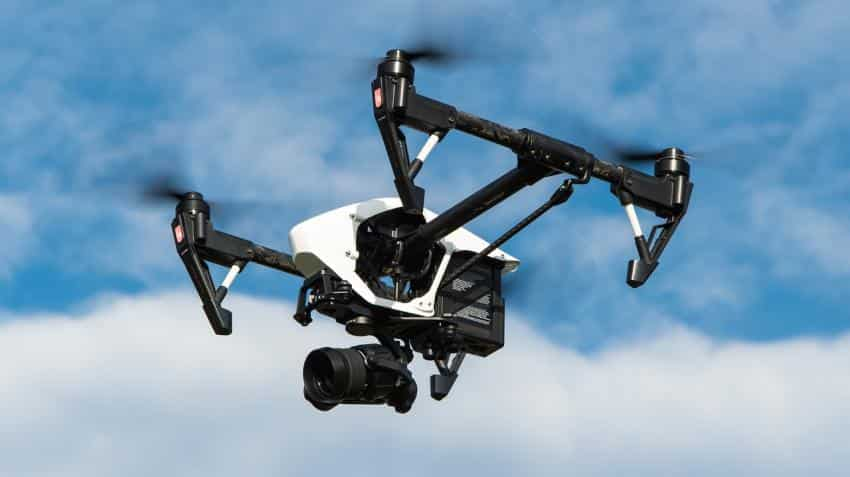Spends on personal, commercial drones to grow to $6 billion in 2017
Almost 3 Million Personal and Commercial Drones Will Be Shipped in 2017.

Production of drones for personal and commercial use is growing rapidly. The global market revenue expected to increase 34% to reach more than $6 billion in 2017 and grow to more than $11.2 billion by 2020, according to a Gartner report.
Almost three million drones will be produced in 2017, 39% more than in 2016. Even in 2016 the growth in the sales of drones had increased by 60.3%.
While the civil markets (personal and commercial) have been seeing some roadblocks as it has to skirt regulation by various governments, the popularity of drones in these markets has not diminished. The overall drone market will see substantial growth, but the dynamics of the personal and commercial submarkets are very different, Gartner analysts said.
Revenue from personal drones in 2017 is expected to grow to $2.3 billion from $1.7 billion last year. While commercial drones revenues is expected to increase to $3.6 billion in 2017 from $2.7 billion in 2016.
“Personal drones will continue to increase in popularity as an affordable extension of consumers' smartphones for taking photographs and selfies and for other entertainment options. They can fly a short distance and time, typically no more than 5,000 meters and for one hour, with flight height constrained to within 500 meters. They weigh less than 2 kilograms and are priced less than $5,000.,” said the report.
The market for commercial drones is much smaller, with a significantly higher average selling price in comparison with personal drones. With more countries solidifying their drone regulations, the market is beginning to stabilise, and companies are now buying drones to test and deploy in nearly every industry, said the report.
Commercial drones normally have a higher payload, longer flight times, and redundant sensors and flight controllers to make them safer. They are more specialised to a function, such as mapping, delivery or industrial inspection, so prices vary according to these requirements.
"The commercial and personal drone markets are increasingly overlapping, as lower-priced personal devices are being used for commercial ventures. Personal drone vendors are now aggressively trying to position themselves in the commercial market. Recent technological advances blur the lines, allowing personal drones to be used in many special-purpose applications such as surveillance, 3D mapping and modeling,” said Gerald Van Hoy, senior research analyst at Gartner.
Agriculture was considered to be the first big commercial drone market, but pricing and economic dynamics around tighter yields and returns on investment mean that the commercial agricultural drone market is not growing at the pace of other commercial drone markets. Gartner predicts that through 2020, the high cost sensitivity of the agriculture market will limit drone adoption to 7% of commercial market growth.
Delivery drones continue to capture the attention of the news media but will not be a major factor for several years. The return on investment has not been proven either in regard to the cost of the drone, operational costs and a single customer delivery.
"Delivery drones will be mired in logistical issues like the time needed to return a drone to its origin point after delivery, and will amount to less than 1 percent of the commercial market by 2020," said Mr. Van Hoy. "We expect that delivery drones will begin finding a niche in business-to-business applications first, particularly for internal services within one company where logistics will not be such a big factor."
Get Latest Business News, Stock Market Updates and Videos; Check your tax outgo through Income Tax Calculator and save money through our Personal Finance coverage. Check Business Breaking News Live on Zee Business Twitter and Facebook. Subscribe on YouTube.
RECOMMENDED STORIES

Looking for short term investment ideas? Analysts suggest buying these 2 stocks for potential gain; check targets

SBI 444-day FD vs PNB 400-day FD: Here's what general and senior citizens will get in maturity on Rs 3.5 lakh and 7 lakh investments in special FDs?

Power of Compounding: How long it will take to build Rs 5 crore corpus with Rs 5,000, Rs 10,000 and Rs 15,000 monthly investments?

Small SIP, Big Impact: Rs 1,111 monthly SIP for 40 years, Rs 11,111 for 20 years or Rs 22,222 for 10 years, which do you think works best?
04:58 PM IST










 Drones are mapping Indian cities to update old land records
Drones are mapping Indian cities to update old land records Global IT spending forecast to grow by 2.7% in 2017: Gartner
Global IT spending forecast to grow by 2.7% in 2017: Gartner 50% smart city citizens may voluntarily share personal data, Gartner says
50% smart city citizens may voluntarily share personal data, Gartner says Less than 10% smart cities will be 'large-scale', Gartner says
Less than 10% smart cities will be 'large-scale', Gartner says IT services spend to touch $ 7.2 billion this year, Gartner says
IT services spend to touch $ 7.2 billion this year, Gartner says